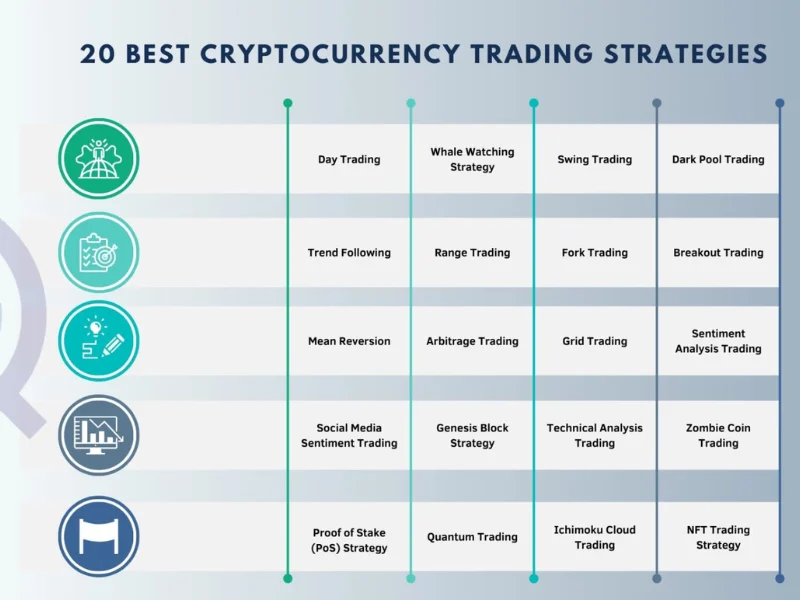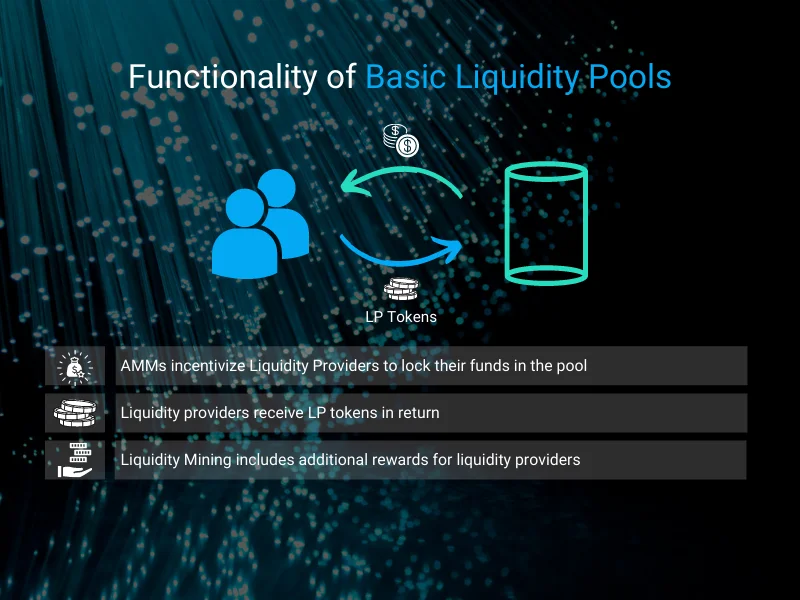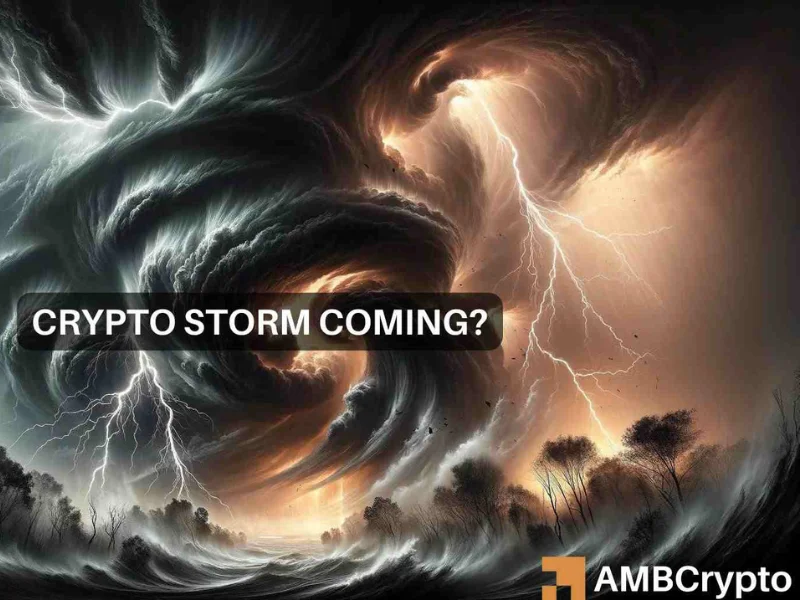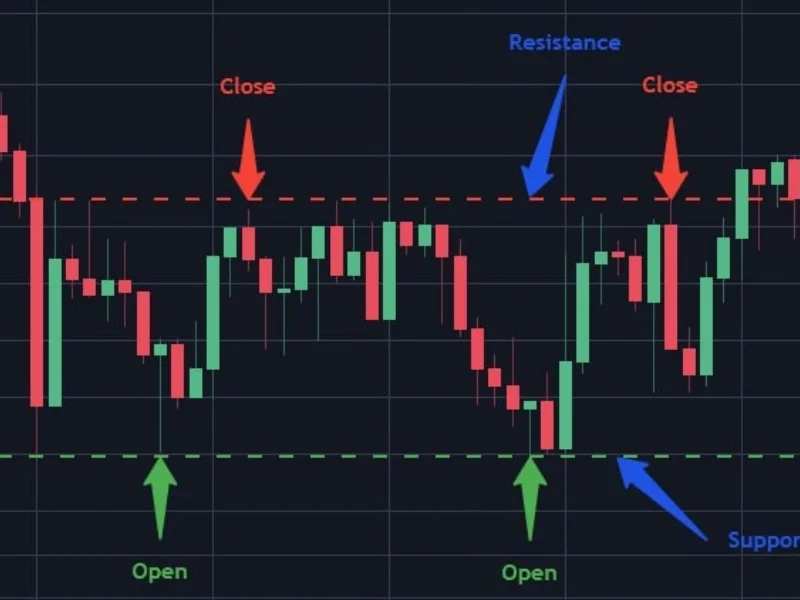1) Introduction
Purpose of the article
This piece gives you a crisp, data-driven tour of what’s happening right now in crypto—so you can understand Crypto Liquidity Explained (how easily assets can be bought/sold without moving the price) and why it becomes the make-or-break variable when markets get wild. We draw on up-to-the-minute sources used by pros—CoinDesk, Glassnode, CoinShares, DeFiLlama, Kaiko, CoinMarketCap/CoinGecko, Bloomberg Crypto, Reuters, and others—so whether you’re a retail beginner, a DeFi native, or an institutional allocator, you’ll leave with an actionable mental model.
Why staying updated matters with Crypto Liquidity Explained
Crypto trades 24/7 across centralized exchanges, DeFi, derivatives, and now ETFs. When macro headlines hit (inflation prints, Fed speeches) or protocol events occur (upgrades, exploits), liquidity thins or floods in, spreading price moves across venues in minutes. We’ve seen this repeatedly in August 2025 as traders recalibrated after U.S. inflation data and before/after Jackson Hole remarks; risk appetite swung with rates expectations and the dollar, and Bitcoin’s path to/away from ATHs tracked those macro pulses.
What you’ll learn (key themes)
- Global market movements: market cap, leader performance, and flows.
- Tech innovations: Ethereum’s upgrades (Dencun → Pectra), Solana scaling, ZKPs, and L2 economics.
- Regulatory updates: SEC/CFTC posture shifts, MiCA in the EU, and key legal outcomes.
- Adoption & sentiment: ETFs, wallets, dApps, NFTs, and the social buzz cycle.
2) Global Market Trends
Current market performance & capitalization
As of August 26, 2025, the total crypto market cap is in the multi-trillion range, led by Bitcoin and Ethereum. Real-time dashboards show global crypto market cap and 24h change; Bitcoin and Ethereum pages provide live 24h/7d performance snapshots you can corroborate with CoinGecko and CoinMarketCap.
Trend checks: Over the last several sessions, BTC oscillated near record territory into mid-August, then faded on macro jitters before rebounding around Jackson Hole headlines. ETH outperformed at points as ETF flows rotated. These moves lined up with shifting rate-cut odds and dollar dynamics—risk assets (including BTC) popped on softer USD and dovish tones, then paused on hotter prints.
Institutional involvement & macro influence
Institutional positioning shows up fast in ETP/ETF flows. The latest CoinShares weekly: one week ago Ethereum led a huge $3.75B inflow week (fourth-largest on record), while the most recent update (Aug 25) flipped to $1.43B outflows—the largest since March—as Fed uncertainty bit. Those swings capture how rates narratives steer institutional risk budgets.
At the single-name level, MicroStrategy remains a bellwether for corporate BTC adoption—its August disclosure put holdings above 226,000 BTC, reinforcing the “corporate treasury as long-vol-on-Bitcoin” thesis that tightens long-run float.
Macro headlines continue to drive Crypto Liquidity Explained beta. Markets positioned around Jackson Hole, CPI, and the path of U.S. policy; Bitcoin has repeatedly reacted intraday to Powell’s tone and USD moves—classic cross-asset risk behavior.


3) Technological Developments and Innovations
Blockchain advancements
Ethereum completed Dencun (March 13, 2024), enabling proto-danksharding (EIP-4844) and lowering L2 data costs; in May 2025 Ethereum activated Pectra, bundling important EIPs (e.g., staking improvements, execution/consensus plumbing) to further the scaling roadmap toward full danksharding. These are not just cosmetic upgrades; they repriced L2 economics and throughput.
Solana continues to push throughput and execution performance; Messari’s Q2 2025 report highlights rising app-level revenue capture and DEX activity, underscoring how performance-oriented L1s compete on user experience.
On-chain data shows how these upgrades translate into usage and positioning. Glassnode’s recent market pulses note periods of elevated profitability and low BTC volatility expectations (a setup for sharp moves) and strengthening ETH bids into ATH attempts—evidence that tech milestones do propagate into flows/sentiment.
Security enhancements in crypto
Security is improving along two rails:
- Protocol-level & zero-knowledge advances (ZK proofs, precompiles, danksharding roadmap) that reduce data overhead and enable safer scaling.
- Ecosystem hygiene: exploit tracking and response. DeFiLlama’s “rekt”/hacks tracking and independent security reports show how losses cluster, where audit coverage lags, and how new design patterns (e.g., permissioned deploys, circuit breakers) spread.
On the market-structure side, CryptoQuant and peers monitor exchange reserves, miner flows, and realized gains/losses—inputs traders use to gauge security of liquidity (how much sell-pressure is sitting on exchange) and potential stress. Recent notes flagged multi-million BTC reserves on exchanges and shifts in inflows during pullbacks.
Smart contracts & dApps: why they matter for liquidity
dApps convert idle capital into executable liquidity. AMMs, perps, money markets, and NFT marketplaces are programmable venues: when fees fall (post-Dencun on L2s), usage often rises. Messari’s Q2 sector reports and dashboards show robust DEX activity across ecosystems; Dune dashboards capture venue-by-venue volumes and user counts. The blend gives a live read on where on-chain liquidity is deepest at any moment.
4) Regulatory and Legal Landscape
What changed recently (SEC, CFTC, MiCA, FCA)
- U.S. SEC: Under Chair Paul Atkins, the agency announced Project Crypto—a plan to modernize rules (custody, token distributions, trading). The SEC also set up a Crypto Task Force roadshow to gather input from startups in 10 cities. These signal a pivot away from “regulation by enforcement” toward rules-first engagement.
- U.S. CFTC: Considering pathways to list spot crypto on registered futures exchanges—another step toward a unified, regulated market structure.
- EU (MiCA): Implementation continues with Level 2/3 measures rolling out; MiCA frames stablecoin issuance and VASP licensing across the bloc, harmonizing rules for market integrity and consumer protection.
- UK (FCA): The FCA has toughened promotions rules and keeps revisiting guardrails around high-risk Crypto Liquidity Explained ads and retail protections as policy evolves. (Context: FCA crypto policy pages and UK press notes in 2024–25.)
Legal cases & precedents to know
- Coinbase vs. SEC: The Commission dismissed its civil enforcement action in Feb 2025—a landmark de-escalation.
- Ripple (XRP): In Aug 2025 the SEC ended its case with Ripple paying a $125M fine, closing one of crypto’s longest legal sagas. Liquidity in XRP on U.S. venues rose to record market depth the following week, per Kaiko.
- Binance/CZ: U.S. enforcement culminated in 2024 with a plea and 4-month sentence, while 2025 saw SEC actions scaled back/dismissed. These outcomes set compliance baselines for global exchanges.
Why this matters for liquidity: clearer rule-sets and settlement of marquee cases allow market makers and institutions to add depth with less headline risk, which tightens spreads and reduces slippage during shocks.
5) Adoption and Market Sentiment
Retail & institutional adoption
ETF/ETP flows (CoinShares) are the cleanest institutional signal; the $3.75B inflow week (Aug 18) marked peak optimism into ETH, followed by the $1.43B outflow week (Aug 25) as macro flipped. Swingy—but that’s adoption growing through cycles.
On retail, platform usage, dApp DAUs, and wallet growth pulse with fees and narratives. Dapp industry dashboards show DeFi TVL near $150–200B and NFT activity rebounding in spurts, with July seeing a sharp jump in NFT dollar volumes even as average prices reset.
Social media & influencer effects
Santiment tracks social buzz and crowd positioning; mid-August showed the most negative social sentiment day of 2025 around a BTC dip near ~$112k—classic capitulation chatter that often precedes rebounds. Using social + on-chain context helps filter influencer noise and avoid buying tops.
6) On-Chain and Blockchain Activity
Tracking on-chain activity
Key health checks: active addresses, transaction volume, exchange reserves, realized profit/loss, miner flows. Glassnode’s weekly notes and market pulse summarize these so you can see when “on-chain heat” diverges from price (e.g., high profitability + fading spot volume can warn of fragile rallies).
On the supply side, CryptoQuant monitors exchange reserves—rising reserves = more potential sell pressure; falling reserves = tighter float. The latest quick-takes and dashboards put reserves in the ~2.5M BTC area recently, a context for evaluating dip risks.
Liquidity and market movements
Liquidity is where price action lives. Kaiko’s market-depth data shows how 1% depth and spreads have hit cycle highs in 2025 for major pairs, helped by institutional market makers and ETF-driven inventory. When macro fright hits, depth evaporates and impact cost spikes—thin books + forced flows = outsized candles.
In DeFi, TVL and DEX volumes are your proxy to on-chain liquidity. DeFiLlama puts TVL around $150B+ with ~$20B 24h DEX volume; that capacity cushions slippage for on-chain traders and arbitrageurs bridging CEX/DEX pricing.
7) Emerging Trends and the Road Ahead
NFTs: from winter to selective thaw
After a long reset, July saw NFT dollar volumes jump even as average prices stayed lower—more participants transacting at better fee environments. It’s a thinner, more utility-oriented market (gaming, RWA, social), but signs of life are visible.
DeFi’s continued evolution
Money markets, perps, and L2 DEXs continue to compound features (cross-chain intents, gas abstraction). TVL has rebuilt into the ~$150–200B zone, and some protocols post strong fee/revenue figures—evidence that on-chain liquidity is maturing beyond speculative cycles. Use DeFiLlama to compare protocol TVL, fees, and volumes.
Stablecoins and CBDCs
Stablecoins are the transactional grease of crypto, but central bankers remain wary. BIS’s 2025 work is blunt that stablecoins underperform as “money,” nudging jurisdictions toward CBDCs and tokenized deposits; the IMF is publishing design/legal notes on CBDCs’ private-law and offline features. For markets, that means a future where tokenized fiat rails coexist with public-chain assets—and liquidity routing between them gets faster and safer.


8) Investor Insights and Sentiment Analysis
Behavior patterns in volatility
On-chain prints of who is selling to whom matter. Glassnode frequently shows short-term holders distributing to long-term holders on dips—classic transfer that often stabilizes floors. Coupled with Santiment’s social data (fear spikes), this helps time entries/exits more rationally.
Nansen’s playbooks emphasize wallet cohort analysis (“smart money,” whales, insiders) to anticipate flows into themes (L2s, perps, RWAs). That lens complements charts and avoids pure headline-chasing.
Risk management that actually works in crypto
- Position sizing for tail risks;
- Venue diversification (CEX + DEX + ETFs);
- Hedging with perps/options;
- Stablecoin buckets to meet collateral and gas needs;
- Exposure to L2s post-Dencun for fee-sensitive strategies.
Messari’s ecosystem reports outline how treasuries and funds mix staking, liquid staking, and basis trades to generate carry without over-concentrating idiosyncratic risk.
9) Case Studies
Bitcoin halvings & price impact
Historically, halvings compress miner issuance and often precede multi-quarter uptrends—but macro and liquidity conditions decide the path. In 2024’s halving, BTC ultimately set successive ATHs into 2025 as ETF demand and macro eased, but drawdowns around prints remained violent when liquidity thinned. Contemporary coverage shows new highs in July/August 2025 and subsequent macro-driven whipsaws.
Ethereum’s transition through Dencun → Pectra
- Dencun (EIP-4844): cheaper rollup data → lower L2 fees, better UX.
- Pectra (May 7, 2025): a bundle of improvements (staking exits, deposits, precompiles) aimed at throughput, client efficiency, and UX—another step toward full danksharding. The net: more sustainable capacity for dApps and smoother liquidity routing across L2s.
10) Impact of Global Events on Crypto
Economic factors
Crypto’s biggest tailwinds/turbulence this summer echoed rate-cut odds and the USD. Risk assets (BTC included) tracked softer dollar episodes and dovish interpretations of policy communication, while hotter data sparked risk-off and outflows from Crypto Liquidity Explained funds.
Geopolitics
Shocks (conflicts, sanctions headlines) can pull liquidity as market makers step back. Newswires regularly show BTC slipping on risk-off days and bouncing as tensions ease—a correlation that tightens when liquidity is thin and macro dominates narrative.
11) Key Insights from Industry Experts
- CoinDesk/Bloomberg Crypto Liquidity Explained coverage throughout August highlights the tug-of-war between macro caution and risk appetite, with BTC approaching/retreating from highs accordingly.
- CoinShares’ James Butterfill’s weekly flows reports are the institutional tape—massive ETH inflows one week, broad outflows the next—showing how quickly allocations pivot with policy expectations.
- Kaiko emphasizes liquidity depth and onshoring trends (e.g., XRP depth records after legal clarity), a subtle but vital driver for sustainable rallies.
Takeaway: In 2025, liquidity is the story—policy clarity and infrastructure upgrades are letting bigger, steadier capital participate, but when macro turns, that same capital can pull or rotate quickly.
12) Conclusion
Recap
- Markets: Large swings around macro; leadership shifts between BTC and ETH as ETFs and flows rotate.
- Tech: Ethereum’s Dencun→Pectra and Solana’s scaling keep pushing real throughput and better UX—fuel for on-chain liquidity.
- Regulation: U.S. posture dramatically softened (Project Crypto; key cases dismissed/closed). MiCA keeps harmonizing EU rules. Liquidity benefits when uncertainty falls.
- Liquidity: Depth and spreads improved in 2025, but evaporate during shocks—know where depth is (Kaiko; DeFiLlama) and when it’s thinning.
Call to action
Bookmark a lean stack of live dashboards:
- Market cap & leaders: CoinGecko/CoinMarketCap.
- Flows & macro: CoinShares weekly flows.
- On-chain: Glassnode & CryptoQuant.
- DeFi liquidity: DeFiLlama TVL & DEX volumes.
- Order-book depth: Kaiko insights.
- Policy: CoinDesk policy feed; ESMA/MiCA pages for the EU.
Being systematic about these will keep you calmly liquid while others chase candles.
13) FAQs (10 quick Q&As)
1) What exactly is Crypto Liquidity Explained liquidity?
It’s how easily you can buy/sell a token at or near the quoted price. High liquidity means tight spreads and small price impact; low liquidity means bigger slippage and air-pockets during stress.
2) Why did liquidity improve in 2025?
Regulatory clarity (SEC dismissals, policy roadmaps) reduced headline risk; ETFs/ETPs attracted steady two-sided flow; market makers rebuilt depth.
3) How do I measure liquidity?
Watch (a) order-book depth at 0.5%/1% from mid; (b) spreads; (c) volumes across CEX/DEX; (d) slippage for a standard trade size. Kaiko publishes depth metrics; DeFiLlama shows DEX volumes/TVL.
4) Why does macro (Fed, USD) matter for crypto?
Crypto is a risk asset class. Rate expectations affect discount rates and dollar liquidity; softer USD and dovish guidance have coincided with BTC upswings in August.
5) What did Ethereum’s upgrades change for liquidity?
Dencun (EIP-4844) cut L2 data costs; Pectra improved protocol plumbing and staking UX. Cheaper/faster L2s → more users/volume → deeper on-chain liquidity.
6) What’s the simplest institutional signal to track?
Weekly CoinShares flows for ETFs/ETPs (by asset and region). A surge in ETH inflows vs. BTC outflows (or vice versa) often foreshadows leadership rotation.
7) How do I know if a sell-off is “real” or just thin-book noise?
Cross-check: order-book depth (Kaiko), DEX volumes/TVL (DeFiLlama), spot vs. perps funding, and exchange reserves (CryptoQuant). If depth is thin and reserves spike, expect outsized moves.
8) Are stablecoins reducing volatility—or adding risk?
They reduce trading frictions but raise policy concerns; BIS warns stablecoins underperform as “money,” pushing CBDCs/tokenized deposits as safer rails. For traders, they remain key liquidity tools but carry issuer risk.
9) Did legal outcomes actually change market microstructure?
Yes—closing the Ripple case correlated with record XRP market depth in the U.S., and dismissals (Coinbase) lowered litigation overhang—both supportive for depth and spreads.
10) What should a beginner focus on to avoid bad fills?
Use limit orders; avoid chasing during news spikes; prefer venues/pools with high depth/TVL; and size trades to minimize slippage. Check live spreads/depth (Kaiko) and DEX liquidity (DeFiLlama) before committing.
